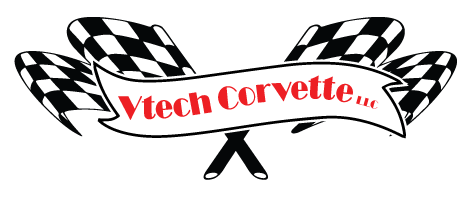The Chevrolet Corvette, a symbol of American automotive excellence, has captivated car enthusiasts for generations with its powerful performance, sleek design, and cutting-edge technology. One of the critical components that contributes to the Corvette’s impressive performance is its differential. In this essay, we will delve into the world of the Corvette differential, exploring its importance, functionality, and evolution. We will also touch upon the restoration and modification services offered by VTech Corvette, which specializes in C2 and C3 Corvette restoration.
The Role of the Differential
The differential is an essential part of a car’s drivetrain, distributing power from the engine to the wheels. In a high-performance sports car like the Corvette, a well-designed differential is crucial for achieving maximum traction and control. Without a differential, the car’s wheels would be forced to rotate at the same speed when turning, leading to a loss of traction and stability.
In the Corvette, the differential is pivotal in transmitting power to the rear wheels while allowing them to rotate at different speeds when necessary. This function is essential for maintaining stability during acceleration, cornering, and other driving scenarios.
Functionality and Types
Corvettes have employed various types of differentials over the years. The most common types include open differentials, limited-slip differentials (LSD), and electronic limited-slip differentials (eLSD). Each type offers a unique set of benefits and drawbacks.
1. Open Differential: This is the most basic type of differential. It allows the wheels to rotate at different speeds during turns but tends to transfer power to the wheel with the most minor traction. While open differentials are less complex and cost-effective, they can result in wheel spin, reducing the Corvette’s overall performance.
2. Limited-Slip Differential (LSD): LSDs are designed to address the shortcomings of open differentials. They provide a certain level of torque distribution between the wheels, improving traction and control during acceleration and cornering. This differential type enhances the Corvette’s ability to put power down to the ground effectively.
3. Electronic Limited-Slip Differential (eLSD): Modern Corvettes, particularly those from the C6 and C7 generations, feature advanced eLSD technology. eLSDs use electronic sensors and actuators to control torque distribution to the rear wheels precisely. This offers superior handling, stability, and performance, especially with advanced features like traction and stability control systems.
VTech Corvette’s Restoration Services
VTech Corvette specializes in C2 and C3 Corvette restoration, focusing on preserving the legacy of these classic American sports cars. As part of their restoration services, the differential is a crucial component that receives attention. Restoring a Corvette’s differential involves disassembling, inspecting, and refurbishing or replacing components to ensure optimal performance and longevity.
The restoration process may include rebuilding the differential housing, installing new gears and bearings, and fine-tuning the differential to meet the original factory specifications. Additionally, VTech Corvette offers performance enhancements, allowing Corvette owners to upgrade their differentials to more advanced LSD or eLSD configurations, which can significantly improve the car’s handling and traction.
The Corvette differential is a crucial component of this iconic sports car, enabling it to achieve exceptional performance and handling characteristics. Whether in the classic C2 and C3 models or the modern versions, the differential’s design and technology have evolved over the years to provide improved traction and control. VTech Corvette’s restoration and modification services contribute to preserving and enhancing the Corvette’s legacy, making it a truly iconic American automobile. As the Corvette continues to evolve and impress automotive enthusiasts worldwide, its differential will remain an essential element of its legendary performance.

